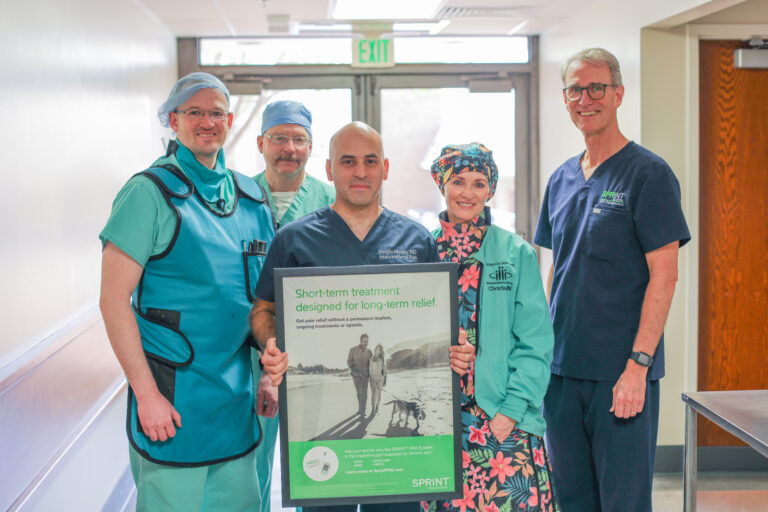
Childhood Obesity on the Rise in Generation Z
Generation Z—those children born in the mid-2000s, after the Millennials—are facing the dangers of obesity at an alarming rate. The percentage of obese children in the United States aged 6 to 11 increased from 7 percent in 1980 to 18 percent in 2012, according to the Center for Disease Control and Prevention (CDC). And, during the same time period, the percentage of obese teenagers aged 12 to 19 increased from 5 percent to 21 percent.
“It’s unsettling to know that childhood obesity has more than doubled in children and quadrupled in teenagers in the past 30 years,” says Karla Adams, Family Nurse Practitioner at Bingham Memorial Hospital. “But, families do have options and there is hope.”
WHAT ARE THE CAUSES?
In many cases, becoming overweight is the result of too few calories burned compared to the amount of calories consumed, which is called caloric imbalance. Obesity in this generation of child and teenagers can be linked to:
Inactivity. Kids and teenagers are not as active as older generations once were, many consider them lazy or couch potato kids.
Technology. Kids today spend a lot of time on their electronic devices, such as phones, computers, iPads, playing video games, and watching television, all of which keep them from being as active as if they were riding bikes or running around outdoors.
Poor Eating Habits. Much of the world today runs on fast food and unhealthy diets. It’s easier to eat poorly as opposed to taking the time to plan out and maintain a healthy diet. Parents have less time to plan and make healthy meals.
Medications. Some prescribed medications such as steroids and some psychiatric medications—not prescribed as often in the past—can cause weight gain.
Stressful life events or changes. Generation Z is dealing with an increase in separations, divorce, moves, deaths, abuse, general family and peer problems, low self-esteem, and depression or other emotional problems.
HEALTH EFFECTS OF CHILDHOOD OBESITY
“We need to start addressing these types of issues in this generation, or they are going to start seeing more immediate and long-term medical problems, which will affect their health and well-being,” says Karla.
Immediate health effects:
- Children and adolescents who are obese are at greater risk for bone and joint problems, sleep apnea, and social and psychological problems such as various forms of bullying and poor self-esteem.
- Obese adolescents are more likely to have prediabetes, a condition in which blood glucose levels indicate a high risk for development of diabetes.
- Obese youth are more likely to have risk factors for cardiovascular disease, such as high cholesterol or high blood pressure.
Long-term health effects:
- If children and adolescents are obese, they’re likely to be obese as adults. As adults, they’ll be at an increased risk for such health issues as heart disease, osteoarthritis, type 2 diabetes, and strokes.
- Being overweight and obese are associated with an increased risk for many types of cancer, including cancer of the breast, colon, esophagus, kidney, pancreas, gall bladder, thyroid, ovary, cervix, prostate, and more.
POSITIVE SOLUTIONS
Get Active! Encourage healthy lifestyle habits, which include better eating and physical activity, both of which can lower the risk of becoming obese and developing related diseases. Your child needs an hour of physical activity every day. Get fit as a family. If you are active, your child will be, too. Try walking or biking. Play games with your child, like tag and jumping rope.
Limit use of technology. This is called “screen time.” Parents can set reasonable time limits for the use of technology, such as an hour of television or video games a day. “Children age two and younger should have no screen time,” says Karla. “Older children should have two hours or less of screen time daily.” The American Academy of Pediatrics recommends limiting screen time to one to two hours daily.
Understand school policies. Ensure your child’s school is establishing a safe and supportive environment with policies and practices that support healthy behaviors. Schools should also be providing opportunities for students to learn about and practice healthy eating and physical activity behaviors.
TIPS FOR PREPARING AND EATING HEALTHY MEALS
“It’s no wonder obesity is on the rise when you consider what children are being fed today,” says Karla. According to the Journal of the American Dietetic Association, pizza, soda and baked goods are the top three sources of calories for most American children. That means 40 percent of their daily calories are from fat and sugar.
- Cut back on sweets, fried food and fast food.
- Don’t let kids eat in front of the TV.
- Give kids less fruit juice and soft drinks.
- Make sure your child eats breakfast. Then they are less likely to eat unhealthy snacks later.
- Serve fruits, vegetables, whole grains and lean meats.
Amp up your kids’ nutritional benefits with these easy substitutions:
Instead of: PB&J on white bread
Try packing: Whole-wheat pita and hummus
Why? More fiber, less sugar
Instead of: Soda or fruit juice
Try packing: Low-fat chocolate milk
Why? Still tasty, but has calcium
Instead of: Chips or cheese puffs
Try packing: Pretzels or popcorn
Why? Same crunch, less fat
HOW TO TALK TO KIDS ABOUT WEIGHT
When children are overweight or obese, it can affect them—physically and emotionally—for life. The first thing Karla recommends is that a child who is considered obese or overweight, should have a thorough medical evaluation by a health practitioner to understand the physical cause. If a physical disorder is eliminated, then the only way to lose weight is to reduce the number of calories and increase physical activity.
Because Karla has extensive medical experience, especially with young children, she understands that it can be difficult for some parents to start the conversation about weight. “They don’t know what to say, and they don’t want to make it worse,” says Karla. Here’s how to tackle such a sensitive, yet important, issue.
Focus on health. When you talk to your children about health rather than appearance, you’re more likely to be productive.
Set realistic goals. Don’t focus on losing a large amount of weight in a few weeks. Focus on the long term.
Be a team. Plan and eat meals together. Teach your children about budgeting and money in the process. And then take them grocery shopping once a month to allow them to pick out fruits and vegetables and be a part of the process—from store to table. Instead of telling kids what to do, be their partner in this journey.
NEED A FAMILY MEDICINE SPECIALIST?
Karla Adams is a Family Nurse Practitioner (FNP) and has been working in the medical field for nearly 30 years. She started her career as a Licensed Practical Nurse and later became certified as a Registered Nurse. Karla specializes in family practice for patients of all ages, with an emphasis on pediatrics.
She sees patients in Blackfoot and same day appointments are available. To schedule an appointment, please call (208) 782-3990.
Our content is reviewed regularly and is updated when new and relevant evidence is made available. This information is neither intended nor implied to be a substitute for professional medical advice. Always seek the advice of your physician or other qualified health provider prior to starting any new treatment or with questions regarding a medical condition.



